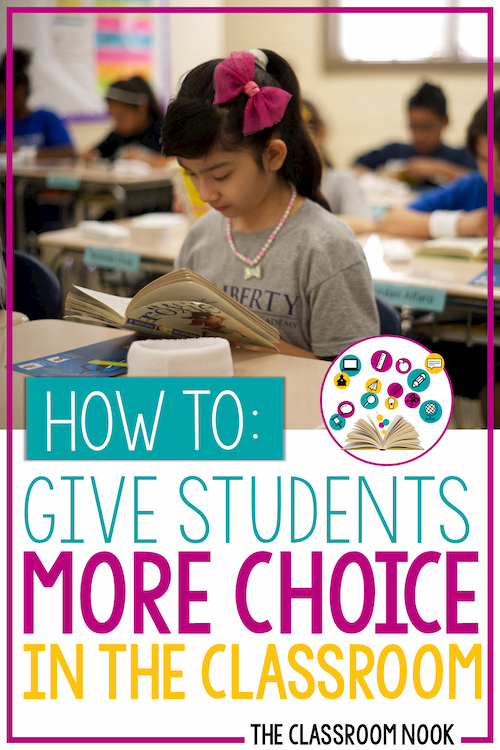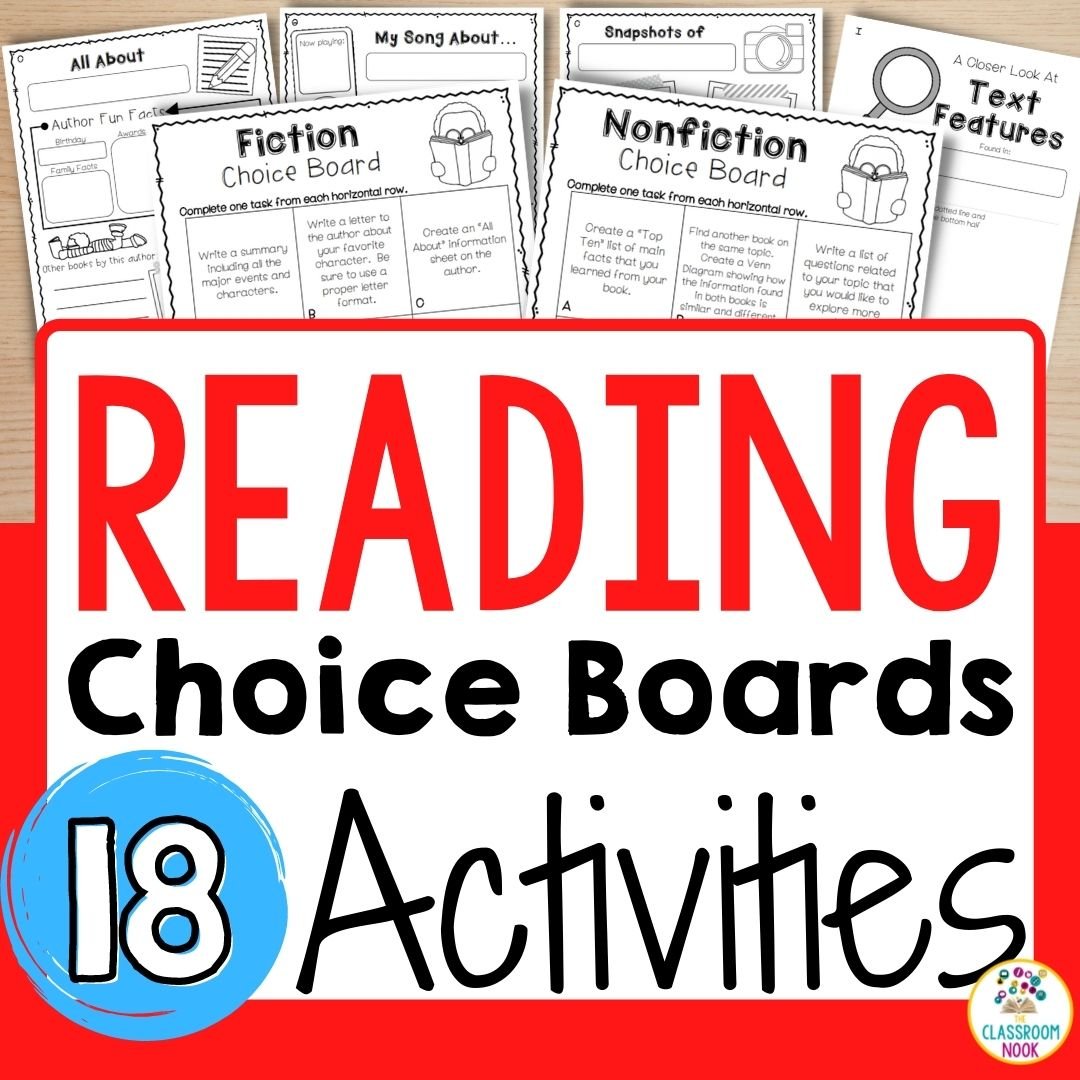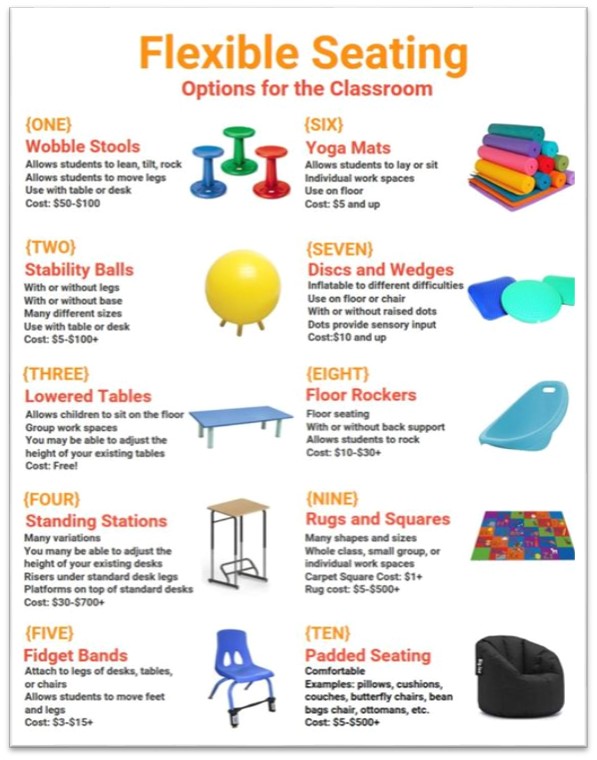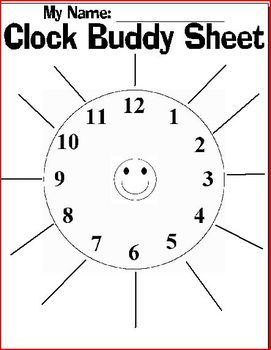Giving Students More Choice in the Classroom

Once upon a time I was a tired, stretched-too-thin, first year teacher working on my thesis in grad school. Been there? It wasn't pretty, but I made it through. The official title of my thesis in grad school was: Students Choice in the Classroom and Its Impact on Student Motivation.
Fancy-schmancy huh?!
Truth be told, I HATED working on my thesis, but it did force me to focus on the power of giving students more choice in their learning.
The findings for my thesis were not surprising: student were, in fact, more motivated to learn when they felt they had more choice in their learning environment. More choice in HOW they learned, more choice in WHAT they learned, and more choice on WHO they could learn with.
More choice leads to more ownership, leads to more student buy-in, leads to more motivation.
It makes sense, right?
If I TELL my 3 year old daughter that she WILL wear her black shoes to preschool, I will no doubt get push back. But, if I let her CHOOSE from 3 pre-selected shoes choices (all of which I'd be okay with), it's a win-win and she doesn't end up screaming because I won't let her wear her flip-flops in a blizzard.
But - I won't make you read my thesis to get all the juicy details on how you can apply these findings in your classroom.
Oh - and in case you're wondering - real education scholars like Lev Vygotsky also believed in these ideas, so my thesis is in good company :)
Instead, I'll share with you some practical take-aways that you might find helpful.
LET STUDENTS CHOOSE HOW THEY LEARN:
When possible, give students several options in how they can absorb new content. Give students their end goal for learning, but provide several options for how they can reach that end goal. Here are some ideas:
Give students the choice of using technology (websites, learning apps...etc) vs. traditional resources (books, articles...etc.) For example, if you're doing research, provide both print and web-based resources for learning the content. We tend to assume that ALL kids would prefer using technology over more traditional resources, but I've found that some students learn best when they can manipulate, touch, and get up-close to books, magazines, articles, and real-life artifacts and objects.
Allow students choice in showing how they've learned with the use of choice boards. If a student would prefer creating book trailer instead of writing a traditional book summary, do we assume that student hasn't learned as much? Of course not. Choice boards give students the chance to choose the pre-selected activities that fit with their learning style. Choice boards are a great tool that teachers can prep ahead of time to be used all year long.
You May Also Like to Read: SET IT AND FORGET IT: ACTIVITIES YOU CAN PREPARE FOR YEAR-LONG USE
Choice boards make great reading responses for individual student reading. Varied activities like writing a letter to the author, creating a poem or song about the book, illustrating a comic strip about the main events, or even creating word clouds using key words from the book all have the same end goal of having students illustrate their understanding, but appeal to different learners.
You can also check out my Fiction and Nonfiction Choice Boards to give students choice during your reading block. (click image on left for more details)
Consider using flexible seating during your school day. Many teachers are foregoing traditional seating arrangements for more flexible options. I've heard numerous success stories of the positive difference this change has had on their classroom environment. If you're not ready to completely pull the plug on using traditional student desks in your classroom (I totally get it!), then consider allowing your students to choose more flexible seating options (sitting on carpet squares, bean bag chairs...etc) during portions of your day. Times allotted for activities like independent reading and writing, center time, and morning work are great times to allow your students choice in where they sit.
Here are some flexible seating options that you can have on hand in your classroom for those times you'd like to give your students choice in where they sit (click to enlarge picture for details):
Give students choices in their assessments: Another simple way to include more choice in your instruction is to give students more options with your assessments. For example, with my own students, I would often provide them with 3-5 essay/longer responses questions for a unit assessment and require them to pick only 2 to answer. This took the pressure off the students and allowed them to pick the questions that they thought they could answer really well.
LET STUDENTS CHOOSE WHAT THEY LEARN:
Of course you have standards and learning targets that you are required to teach, so offering choice in WHAT students learn is not always possible. However, there are several time throughout the year where you can sneak in choice into student learning.
Build Choice Options Into Your Units: Studies on larger topics often make it easy to weave choice into your instruction. For example - if you're studying animal life cycles or habitats, allow students to choose which animal they learn about. Or, if you're teaching a topic that is broken up into several categories (take learning about colonial jobs for example), allow students to choose a category of that main topic (Ex. learning about the job of a blacksmith) that they'd like to become the "class expert" on. That student can then teach their classmate about what they learned.

Start a Google Board: Where do we go when we want to learn more about something or have questions we want answers to? Why - Google, of course! Our students wonder about random things, too, so why not create a space in your classroom that promotes discovery on topics that interest them. I absolutely adore this idea by Third Grade Parade's Instagram account where she invites students to post their questions on her "Google" board. You can easily do this in your classroom and spend some time each week (perhaps on a Friday afternoon to wrap up the week) exploring the answers to student questions posted throughout the week.
Start Reading Partnerships in Your Classroom: Many times we choose for our students what they will read. Teachers strategically choose books that will help teach skills and strategies that students need practice with. And, while this is a necessary form of instruction, it's also important that we give our students plenty of choice in their reading as well. Of course, students have choice in their independent reading, but it's also important to give choice for social reading time as well.
Reading partnerships are ideal for this. With reading partnerships, students are doing more than just "buddy reading." They are engaging in meaningful and intentional times of reading where they discuss open-ended questions on a regular basis. Students are partnered up with similar readers in their classroom and select a book together that they would like for their partnership. Together, the students plan and organize reading meetings.
You May Also Like to Read:
GETTING STARTED WITH READING PARTNERSHIPS IN THE CLASSROOM
STRATEGIES FOR DEVELOPING STRONG STUDENT READING PARTNERSHIPS
LET STUDENTS CHOOSE WHO THEY LEARN WITH:
Are you like me? You cringe letting your students pick their own partners because you KNOW the potential problems that may arise. I get it. I'm hesitant, too. However, if you're strategic about HOW you let them pick who they work with, you can avoid some of those potential problems. One strategy I used with my students was the "Learning Appointment Clock." The idea is simple. Provide each student with a clock sheet (here's one for free). Students choose buddies for each hour of the clock. If finding 12 partners is too much, consider having students find partners for 12:00, 3:00, 6:00, and 9:00.
When it's time to find a partner, simply announce what appointment students have. For example, you'll call out "Meet with your 3:00 appointment" and students will refer to their clock to find who they have listed next to the 3 on their clock and meet with that student.
You of course do not need to use this clock every time you have students work with partners, but it helps to keep things interesting and varied so that students work with different students of THEIR choosing. You will also want to teach students that if they demonstrate they can not work well with their partner, you have the right to "cancel" that appointment and they will need to find a new partner for that time slot.
It can be difficult to let go of the reigns a bit. And if you're a bit of a control-freak (I've got my hand in the air, too!), giving your students more choice in the classroom can feel uncomfortable at first. However, allowing this small shift of control in your classroom empowers students, teaches them to be problem-solvers, and prepares them for the real world that is FULL of choices.




